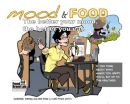(Press-News.org) Redevelopment of the London King's Cross station and the nearby neighborhood was announced in 2005 and completed with a grand opening in 2012. The internationally well-recognized engineering services firm Arup, famous among other things for their work on the Opera House in Sydney, Australia, and the Allianz Arena in Munich, worked on this 400 million pound construction project. In the process, the area to the north of the station including 50 new buildings, 2,000 new apartments, 20 new streets and ten new public squares was being renewed. Thus, a great challenge was to ensure that all project partners had consistent, up-to-date data that could be visualized.
"What has already been standardized for product data is not yet common for all 3D data, and therefore takes a lot of effort," explains Kristian Sons, who is doing his PhD at the faculty of Computer Graphics at Saarland University in Saarbruecken, and does research at the German Research Center for Artificial Intelligence (DFKI), only a few yards away. Some companies maintain Excel sheets manually or develop custom 3D visualiations using computer game technologies. Another challenge for Arup was to present the plan and its progress to the investors and the general public in a way that was easy to understand. Engineering drawings are only suitable for experts. Artistic impressions, on the other hand, do not meet technical specifications, and public exhibitions are too costly and time consuming.
Therefore, the Saarbruecken computer scientists, together with colleagues from University College London, created "XML3DRepo". This service combines two research projects: the description language XML3D and 3D Repo, a version control system for 3D models. These make it possible to save 3D objects, change them and administer changes automatically. The project is sponsored in part by Arup.
The scene description language XML3D, developed by Sons, provides the representation in a web browser. "Through XML3D the complete model of King's Cross can be loaded in a browser and displayed on any web-enabled device," adds Philipp Slusallek, Professor of Computer Graphics at Saarland University who is also a scientific director at DFKI and the Intel Visual Computing Institute. XML3D makes this possible by enhancing the recent web standard HTML5 with the necessary elements to describe not only text, images and videos on a website but also animated and interactive 3D objects. "Thus, all 3D components are part of the HTML code which defines the website. It can be completed with further notes or planning details by any web developer," explains Slusallek.
Engineers at Arup are convinced by the "XML3DRepo" technology. In the future, they will not only be able to simulate passenger flow and arrange the placement of CCTV cameras over the Internet, but will also be able to create realistic visualizations for the public. As the Foresight, Research & Innovation group at Arup writes on its website: "Built Environment Modeling (BEM) offers excellent opportunities to make meaningful stakeholder and public engagement not only possible but also cost effective."
Vertex Modelling, a London based company building the most accurate and detailed 3D model of London, will be also featured in XML3DRepo. The model stretches across a variety of urban landscapes from the new skyscrapers in the City of London and Tower Bridge to residential houses in the boroughs of Chelsea and Knightsbridge along with a variety of London's well known and iconic landmarks.
Kristian Sons believes in the potential of XML3DRepo. He plans to commercialize the software through a spin-off with his research colleague Jozef Dobos from University College London.
INFORMATION:
Press pictures are available here: http://www.uni-saarland.de/pressefotos
More Information:
http://3drepo.org/publications/xml3drepo-a-rest-api-for-version-controlled-3d-assets-on-the-web/
Further questions:
Kristian Sons
Project Leader XML3D
Computer Graphics Faculty, Saarland University
Phone: 0049 (0) 681 85775 3833
Email: kristian.sons@dfki.de
Editor:
Gordon Bolduan
Science Communication
Kompetenzzentrum Informatik Saarland
Phone: 0049 (0)681 302 70741
Email: bolduan@mmci.uni-saarland.de
Talking in 3D: Discussing and administrating complex construction models via a web browser
2014-02-25
ELSE PRESS RELEASES FROM THIS DATE:
Tiger lily heights controlled with flurprimidol preplant bulb soaks
2014-02-25
RALEIGH, NC--Growers and retailers of perennial greenhouse and landscape plants are often challenged by the sheer height of some consumer favorites. While plant height can enhance a plant's versatility and appeal in gardens and landscapes, transporting taller plants from growers to retail or wholesale outlets, and then on to their ultimate destinations can be a challenge. Colorful, summer-flowering, bulbous perennials such as lilies are commonly used as ornamental landscape plants, cut flowers, and potted plants, but their structure makes them top heavy and limits their ...
SA scientists debunk climate change myths
2014-02-25
Wits University scientists have debunked two big myths around climate change by proving firstly, that despite predictions, tropical storms are not increasing in number. However, they are shifting, and South Africa could be at increased risk of being directly impacted by tropical cyclones within the next 40 years. Secondly, while global warming is causing frost to be less severe, late season frost is not receding as quickly as flowering is advancing, resulting in increased frost risk which will likely begin to threaten food security.
According to Jennifer Fitchett, a PhD ...
Can babies learn to read? No, NYU study finds
2014-02-25
Can babies learn to read? While parents use DVDs and other media in an attempt to teach their infants to read, these tools don't instill reading skills in babies, a study by researchers at New York University's Steinhardt School of Culture, Education, and Human Development has found.
"While we cannot say with full assurance that infants at this age cannot learn printed words, our results make clear they did not learn printed words from the baby media product that was tested," says Susan Neuman, a professor in NYU Steinhardt's Department of Teaching and Learning and the ...
Carbon dating uncovers forged Cubist painting
2014-02-25
Choosing the right physical technique to analyse paintings can make all the difference when it comes to ascertaining their authenticity. Now, a painting initially attributed as belonging to a series called 'Contraste de formes' by French Cubist painter Fernand Léger has definitely been identified as a forgery. This is the first time it has been possible to identify a fake painting by relying on the anomalous behaviour of the concentration of the radioactive form of carbon (14C) in the atmosphere after 1955 to date the canvas. These findings were recently published in EPJ ...
Study finds 2 biodegradable mulches to be suitable polyethylene alternatives
2014-02-25
MOUNT VERNON, WA--Polyethylene plastic mulch offers a range of benefits and has become standard for growers of a variety of agricultural and horticultural crops. Despite the recognized benefits, the plastic mulches have serious drawbacks. For example, plastic mulches can typically be used for only one cropping season, after which they must be removed and disposed of, creating expensive and time-consuming processes for growers. The challenges and costs associated with recycling mean that plastic mulches often end up in landfills, buried, or burned on-site--practices that ...
Scientists demonstrate first contagious airborne WiFi virus
2014-02-25
Researchers at the University of Liverpool have shown for the first time that WiFi networks can be infected with a virus that can move through densely populated areas as efficiently as the common cold spreads between humans.
The team designed and simulated an attack by a virus, called "Chameleon", and found that not only could it spread quickly between homes and businesses, but it was able to avoid detection and identify the points at which WiFi access is least protected by encryption and passwords.
Researchers from the University's School of Computer Science and Electrical ...
Study uncovers why almost winning is just as good for some gamblers
2014-02-25
A new study led by the University of Exeter and Swansea University has pinpointed the changes in the brain that lead gamblers to react in the same way to near-misses as they do to winning.
The research shows that near-misses are underpinned by increases in the brain's electrical activity, particularly in the theta frequency range - known to be involved in processing win and loss outcomes.
They found that these increases in theta are linked to both how severe someone's gambling history is and how susceptible they might be to developing a future gambling problem.
Popular ...
Saudi Arabian camels carry MERS virus
2014-02-25
An estimated three-quarters of camels recently surveyed in Saudi Arabia have evidence of infection with the Middle East Respiratory Syndrome coronavirus (MERS-CoV), the virus responsible for human cases of MERS. Results of the new study establish for the first time that direct camel-to-human transmission is possible and provide a pathway to control the spread of the disease.
Results in the journal mBio are reported by scientists at the Center for Infection and Immunity at Columbia University's Mailman School of Public Health; Mammals Research Chair, King Saud University, ...
Novel optical fibers transmit high-quality images
2014-02-25
MILWAUKEE – After having recently discovered a new way to propagate multiple beams of light through a single strand of optical fiber, engineers at the University of Wisconsin-Milwaukee (UWM) now have found that their novel fiber architecture can transmit images with a quality that is comparable or better than the current commercial endoscopy imaging fibers.
Because of this, the work has potential not only in next-generation high-speed communication, but also biomedical imaging.
The work is published today in the journal Nature Communications.
In conventional optical ...
Mood and food: The better your mood, the better you eat
2014-02-25
Previous research has found that emotions affect eating, and that negative moods and positive moods may actually lead to preferences for different kinds of foods. For example, if given the choice between grapes or chocolate candies, someone in a good mood may choose the former while someone in a bad mood may choose the latter. The research reported in this article looks at the "why:" Why, when someone is in a bad mood, will they choose to eat junk food and why, when someone is in a good mood, will they make healthier food choices?
To get at the "why," we married the ...




